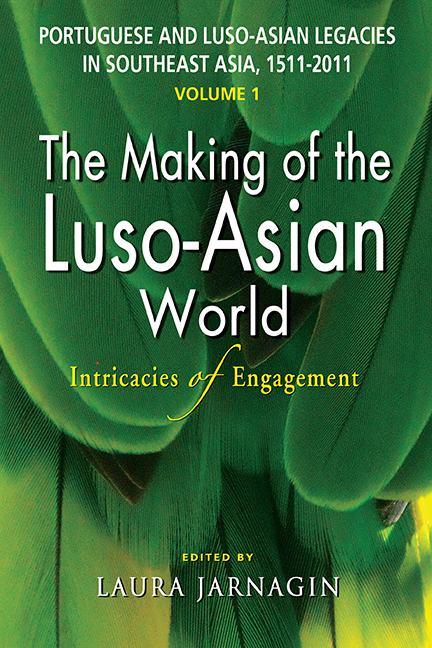 Portuguese and Luso-Asian Legacies in Southeast Asia, 1511–2011, vol. 1
Portuguese and Luso-Asian Legacies in Southeast Asia, 1511–2011, vol. 1 from Part One - Adaptations and Transitions in the South and Southeast Asian Theatres, Sixteenth through Eighteenth Centuries
Published online by Cambridge University Press: 21 October 2015
On 14 January 1641, after a protracted siege lasting five and a half months, Portuguese Malacca surrendered to the Dutch. The loss of Malacca, which had been in Portuguese hands since its capture by Albuquerque from Sultan Mahmud 140 years earlier, was a crushing blow to the Portuguese. At the time the greatest loss the Estado da Índia had ever suffered in the East, it proved a setback from which there would never be a full recovery. Effectively, it marked the end of Portugal's status as a first-rate power in maritime Asia, especially east of Cape Comorin.
The story of the final siege of Malacca by the Dutch in 1640–41 is well known and need not detain us here. But the build-up towards that climax, particularly in the decade or so preceding it, is less clear. What follows is an investigation into a crucial part of this build-up — the rapidly moving situation at Malacca during the administration of Dom Miguel de Noronha, fourth Conde de Linhares. This viceroy, who held office at Goa from 21 October 1629 to 9 December 1635, was an intelligent and hard-working proconsul, tireless in his efforts to sustain the Estado da Índia. Nevertheless, only five years after his departure, Malacca fell. The questions addressed here are to what extent did Portuguese Malacca cease to be militarily and commercially viable during the course of Linhares's term — and, insofar as this did happen, how and why did it happen?
SEVENTEENTH-CENTURY PORTUGUESE MALACCA
Seventeenth-century Portuguese Malacca consisted of an inner city surrounded by defensive walls, within which were the citadel and the Augustinian, Dominican and Jesuit churches and establishments clustered on and around St Paul's hill. Most of the townspeople lived outside the walls in Malay-style thatched houses, particularly to the north of the river. Here were also orchards, gardens and the dusun, or small rural properties on the fringes of the forest. But there was insufficient arable land in Portuguese-controlled territory for the city to feed itself — it was therefore obliged to import rice and other foodstuffs from Java, Siam and elsewhere in peninsular Malaya. Malacca's population under Linhares remained quite cosmopolitan, but the mixture was rather different from what it had been for much of the sixteenth century. Naturally the indigenous Malays formed a substantial majority, but their political influence was limited and they seldom feature in the Portuguese sources.
To save this book to your Kindle, first ensure [email protected] is added to your Approved Personal Document E-mail List under your Personal Document Settings on the Manage Your Content and Devices page of your Amazon account. Then enter the ‘name’ part of your Kindle email address below. Find out more about saving to your Kindle.
Note you can select to save to either the @free.kindle.com or @kindle.com variations. ‘@free.kindle.com’ emails are free but can only be saved to your device when it is connected to wi-fi. ‘@kindle.com’ emails can be delivered even when you are not connected to wi-fi, but note that service fees apply.
Find out more about the Kindle Personal Document Service.
To save content items to your account, please confirm that you agree to abide by our usage policies. If this is the first time you use this feature, you will be asked to authorise Cambridge Core to connect with your account. Find out more about saving content to Dropbox.
To save content items to your account, please confirm that you agree to abide by our usage policies. If this is the first time you use this feature, you will be asked to authorise Cambridge Core to connect with your account. Find out more about saving content to Google Drive.